
Cabin in the Allegheny Mountains, Goes Off-Grid with Wind and Solar Power
Last Updated: Feb 23, 2025A licensed architect who is also Passive House certified and LEED AP, Eric Mucklow works for the US Army Corps of Engineers where his job "is to look for new and underutilized building technologies, and ways of building that are more energy-efficient and sustainable," he says. Those pursuits are alive in his personal life, as well.
"I've always had an interest in renewable energy and experiencing the independence that comes with living off the grid," he says. So, in 2004, he purchased three non-contiguous plots of land with the idea to "build on one, sell it, make a profit; build on the next one, sell it, make a profit; and build and keep the third one and retire."
Now, he says with a laugh, he may have upended his plan with the first cabin (which is nearly completed) because it is turning out so well he wants to keep it. He named the cabin Vis Venti Villa as it's powered by the wind and the sun. "A lot of people based in Washington DC go to the Shenandoah Mountains for their three-day weekends," Mucklow says. "If you keep going toward West Virginia, you get to the Allegheny Mountains, which is more rural, less developed, and surrounded by national forest."
Table of Contents
- How Did the Home Integrate A Combo Wind-Solar System?
- An Upside-Down Cabin for Mountain Views
- Keeping It Local with SIPS
- "It's Fun to Build Sustainably"

The lot on which he's building Vis Venti Villa is on a ridge, "with excellent exposure to the wind. When I started the project, the wind was more economically viable than solar. So, I bought a wind turbine and then decided to add solar to go off-grid."
In building the cabin, Mucklow also wanted to show other homeowners that they, too, can "design to have all of the familiar features of a 'normal' vacation or second home," he explains. "Sustainable design and renewable energy don't have to equate to sacrificing a standard of living. You don't have to 'rough it' if that's not your style."

How Did the Home Integrate A Combo Wind-Solar System?
Mucklow chose a hybrid wind and solar renewable energy system for his 1,200-square-foot cabin. "At the site," he explains, "the wind blows strong in the winter when insolation is low, and vice versa in the summer." The 60-foot-tall, one-kilowatt wind turbine has a controller with input for up to 750 watts of solar. "I had another solar charger that can take another 60 amps," he says.
To install the wind turbine, Mucklow needed to get a conditional use permit. "The county government decided that producing power wasn't a standard use." He also has installed 14 100-watt solar panels.
"Because the cabin is in the mountains, I wanted several reliable sources of heat in case one fails," he continues. The cabin isn't all-electric, though. Not yet. Mucklow is using propane until he installs a solar thermal system. "Ultimately, I'll use solar hot water to heat the solar reservoir that heats the water in the hydronic radiant floor system," he says.

"The hydronic floors, with water as a medium, give me the flexibility to heat the water various ways," he continues. "With wind power, when the batteries are full, the system will automatically switch to dump load, and a heating element in the dump load will capture excess heat." Mucklow reiterates that he can also heat the water with the solar thermal system "and if that fails can heat the water with propane." He also has an "old-timey looking" propane gas stove in the cabin "for ambiance and emergency heat."

An Upside-Down Cabin for Mountain Views
Mucklow designed the cabin "upside-down" to take full advantage of the views. The main living area is upstairs; the bedrooms are on the first level. The garage level is composed of concrete blocks with a frost-protected shallow foundation. "The bedrock is close to the surface. So, by putting down a layer of foam and extending the foam four feet, we could build without digging down below the frost line," he explains. "The foam insulates the ground and prevents it from freezing."
He framed the cabin with wood, a "renewable resource," he says. An open stairwell between the levels created a stack effect: an operable skylight on the third level exhausts warm air and draws in fresh air through the windows. As a result, "there's little need for cooling on the upper level," Mucklow says. "Most of the year, we'll have the windows open."
He selected Kolbe VistaLuxe windows for the cabin, sizing them to maximize the line of sight. He also compared a lot of data on windows on the EPA ENERGY STAR website," he says. Mucklow had already decided to use Passive House principles in the cabin's design and construction but did not seek certification. "I realized double-pane windows with all the bells and whistles—argon-filled, low-E coatings or films, warm edge spaces—performed better than basic triple-pane windows," he says.
"Also, VistaLuxe had corner windows I liked, with clean lines. We wanted to build sustainable and off-grid, but not compromise the intent of the cabin, which is to have the lovely mountain views."

Keeping It Local with SIPS
Mucklow found the windows he liked were available through a local supplier, "so they were also windows local contractors were familiar with," he says. That's also why he chose SIPs for the cabin's walls and roof. "I like the idea of hiring local people to share knowledge and help contractors get exposed to sustainable technologies," he says.
Before he began construction, Mucklow hired a local small business of mostly carpenters, as he intended to build the cabin with double-stud walls and rock wool or mineral insulation. The business owner, however, lost several of his employees, which made the job untenable. But, he also mentioned he was familiar with SIPs, so they pivoted.
Energy Saving Products for the Home
Shop home improvement products that help save and conserve energy (power) in your home.
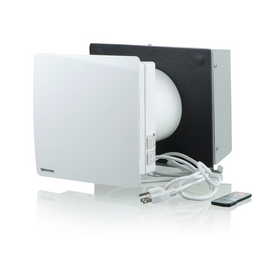
Vents TwinFresh Comfo RA1-50-2 Ductless Energy Recovery Ventilator
Vents
In Stock
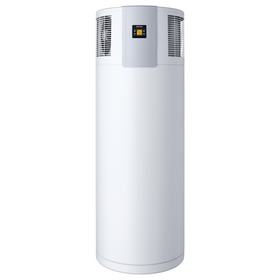
Stiebel Eltron Accelera 300 E Heat Pump Water Heater
Stiebel Eltron
Out of Stock
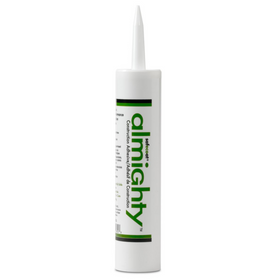
AFM Safecoat Almighty Adhesive Case of 12
AFM Safecoat
In Stock

Emporia Classic Level 2 48 AMP EV Charger UL Listed
Emporia
In Stock
2 Colors

Stiebel Eltron CON 300-2 Premium Wall-Mounted Convection Heater - 202030
Stiebel Eltron
Out of Stock
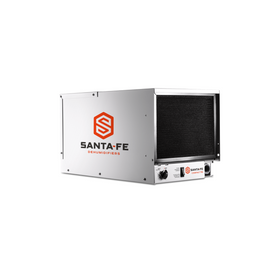
Santa Fe Compact70 Dehumidifier - 4044110
Santa Fe
In Stock

AFM Safecoat 3 in 1 Adhesive
AFM Safecoat
In Stock
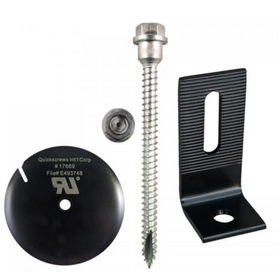
QuickBOLT QB2 with Microflashing Multi Roof Mount Solar Panel Fastener Kit
QuickBOLT
In Stock

Stiebel Eltron DHC-E 8/10-2 Plus Point-of-Use Electric Tankless Water Heater - 202145
Stiebel Eltron
In Stock
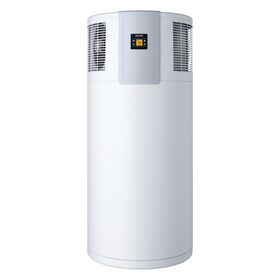
Stiebel Eltron Accelera 220 E Heat Pump Water Heater
Stiebel Eltron
In Stock

The cabin roof has 12-inch SIPs for R-46. The walls are eight-inch SIP for R-30. Mucklow chose metal for the roof as the location is prone to forest fires. The metal is also integral to the rainwater catchment system. Captured rainwater undergoes filtration and UV sterilization, so it's safe for drinking. The cabin is clad in fiber-cement siding for fire resistance and to resist rot during the humid summers.

"It's Fun to Build Sustainably"
The wood paneling for the upper-level ceiling is tongue-and-groove pine. All of the finishes will be low-VOC "because of the air-tight construction," Mucklow says, "but we have an ERV for fresh-air exchange."
While Mucklow says finding local labor could a challenge, he struck a deal with his contractor. "He gave me a bid for the first level, which is concrete block," Mucklow explains. "But now I'm paying him time and materials, so the risk is all on me. I'm doing some of the work too. I built the battery bank myself, for example, using power-wall battery modules from de-commissioned recreational vehicles." Mucklow also has to install a septic system at an additional cost that also requires power, "so I'll use wind and solar for that."

But Mucklow hasn't any regrets. "I love doing the engineering even though I'm an architect, and I can tell the crew working on the cabin are enjoying themselves and are curious about how the project will end up. We're having a good time."
He also encourages other homeowners to go the sustainable route, especially off-grid. "It's a lot of fun to build sustainably," he says.
Your place will be unique. You can tell your grandkids about building it. You don't have to worry about power failures. You feel good about building sustainably.

"You know, I'm a member of a lot of living off-grid forums, and I see lots of people with homesteads who are roughing it compared to most middle-class Americans," Mucklow says. "With this cabin, I want all of the amenities as a regular house—TV, internet, appliances. That's why the cabin is so well-insulated, and I'm using wind and solar to power it all."
As for his next project? Mucklow says, "I've been debating whether I want to sell Vis Venti Villa when it's done. Still, I'm getting good ideas for the next off-grid cabin. I would need to sell this one to get cash for the next one. But I'll definitely enjoy this cabin--until it sells."
Stay tuned for another Rise feature once the build is complete!
Camille LeFevre
Camille LeFevre is an architecture and design writer based in the Twin Cities.
